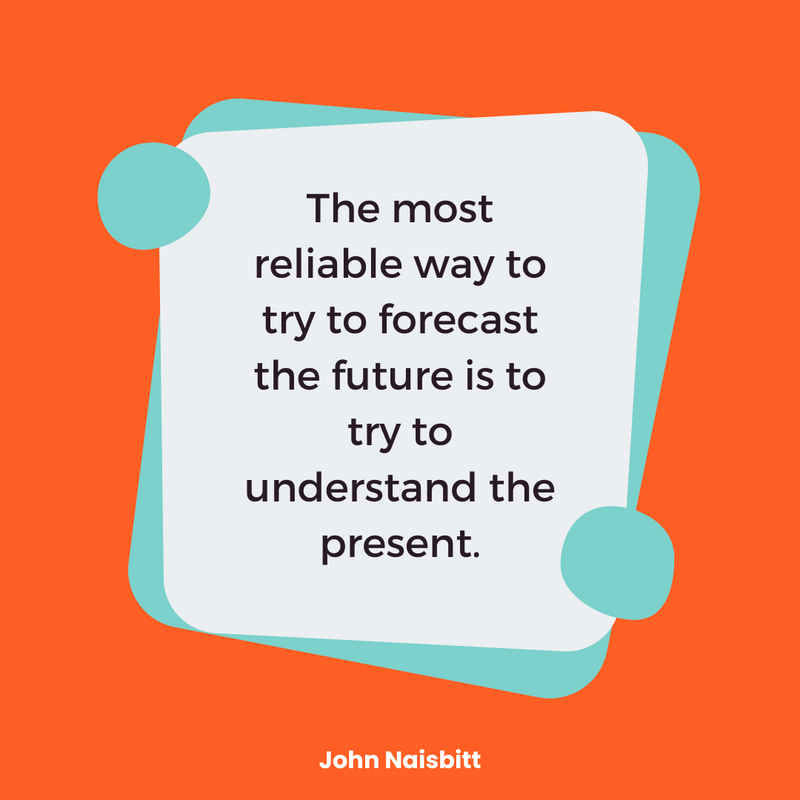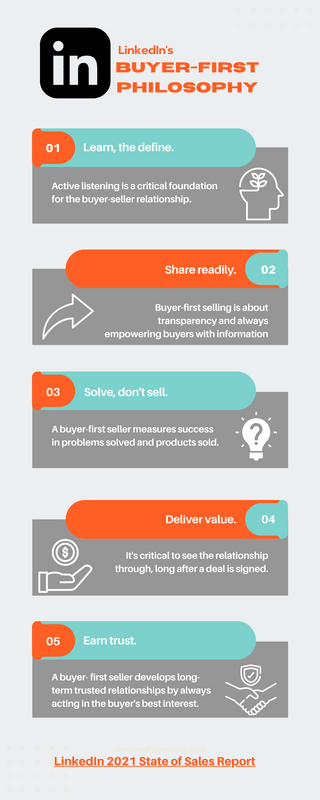Click here to download “5 Sales Trends and How to Put Them to Work Today” (PDF) or read it below.
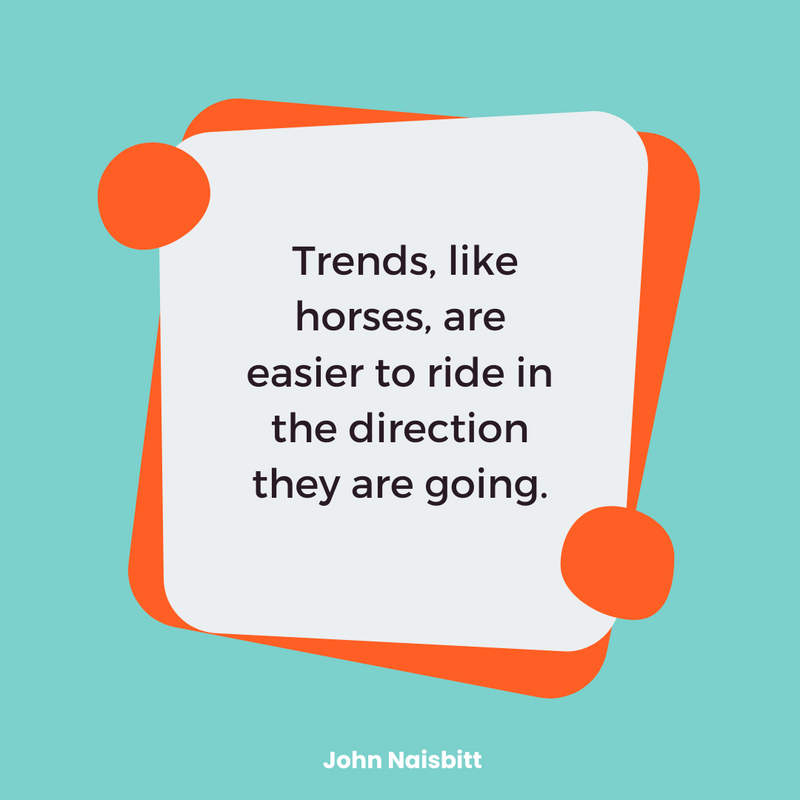
In 1982, John Naisbitt introduced his seminal work, Megatrends, to the world. In the book, he researched and identified global trends he believed would form the future political and economic world. 40 years on, many of his predictions were spot on:
- The shift from a post-industrial society to an information society
- The move away from national economies to global economies
- The breakup of unified societies into diverse groups of people with different values and tastes
And a few may now be viewed as altruistic or perhaps a work in progress:
- Companies will prioritize long-term growth over immediate profits
- Centralized, hierarchical structures become a thing of the past as flatter decentralized corporations become nimbler to cope with the accelerating pace of change. Meta and Google, anyone?
Naisbitt utilized a method to identify trends known as content analysis, which developed during World War 2. Essentially his team analyzed news from states that he believed were “bellwether states,” which tend to originate trends. To learn more about his methodology, check out this piece in Forbes Magazine by Robert Tucker. The article also offers a great take on how Naisbitt’s methodology can still be put into play today.
After the success of Megatrends, which sold 14 million copies in 57 countries, John Naisbitt continued to futurecast. He wrote several sequels, all best-sellers, including Megatrends 2000, Megatrends for Women, and Megatrends Asia.
Trend Forecasting for the Financial Services Industry
There is no denying that 2020 brought about significant shifts in nearly every aspect of our lives. The pandemic necessitated a change in how we work, interact, travel, receive health care, and a myriad of other ways.
We thought a bit about Naisbitt’s content analysis method and how we could apply that to trend forecasting of sales tactics for the financial services sector. At The PT Services Group, we are fortunate to have a front-row seat to the successful sales practices many of our clients employ. Add to that mix the seasoned advice of PT’s Sales Guru, Dan Hudock of Sandler Training, and we’ve come up with a list of 5 Sales Trends and how you can take advantage of them today.
Dan offered a significant caveat that applies to every trend and should be a universal sales truth: establishing trust with your buyer is paramount and vital to a successful relationship. We get it; this is stating the obvious. However, it is crucial to remember trust is at the heart of building a solid client relationship. We are excited to share these trends and how you can use them to build trust and grow your business.
1. Selling is Hyper-Focused on the Buyer
How many of us were trained to sell by going into a prospect appointment and telling? Telling the client all about your product or service, how it will improve their life, how it will give them peace of mind, and how they can’t live without it.
Sure, we were armed with excellent knowledge of our product, but where was the prospect in that approach? And how does that approach build trust and rapport?
According to John Lowe, an executive coach at Ty Boyd, Inc, “people do not like to be ‘sold to.’ They want someone to ‘help them decide to buy.’ This is not merely semantics. Salespeople tend to revert to their training, and in doing so, they act and sound like salespeople. They attempt to move the prospect through the funnel with their eye keenly on the prize: the sale! When they sound and act like a salesperson, the buyer’s defenses go up because they feel like they are being sold to. This makes the end result harder.”
While Lowe shared the obvious, he set the stage for the unfortunate reality that all too many salespeople approach the prospect in a robotic nature – it turns off prospects and clients. Good salespeople determine how to utilize their training and combine it with genuineness, connecting with clients on a fundamental, human level.
Today, successful and skilled salespeople have shifted to a buyer-focused sales approach. The goal of salespeople has long been to learn about the prospect’s objectives and needs. However, we salespeople often have a difficult time NOT talking. It has been an enigma in the industry to conclude what’s best for the prospect quickly. “Here’s our solution!” But getting to those solutions too quickly has been a constant problem for decades.
A customer-first method requires salespeople to be great listeners and to ask intelligent, insightful questions. It also means that the salesperson needs to be both nimble and empathetic. Nimble because you need to absorb and synthesize the information the prospect is giving you to determine if you can meet their needs. Like Mike Tyson said, “Everyone has a plan until they get punched in the mouth.” We don’t always know the answers, but we must be nimble enough to adjust to the prospect’s situation. If you can become good at that, you go where the conversation takes you, while maintaining control of the meeting. We must be empathetic because it’s necessary to be able to relate to your client and appreciate their concerns (even if you don’t share them – that’s the most challenging part) to build that vital trust.
Another unique approach we have seen is advisors developing advisory boards comprised of clients, community leaders, educators, and others. The purpose is to seek advice on improving overall service and specifically how to be buyer focused.
Advisors are then synthesizing their findings and sharing them with their entire client base, letting them know that they are seeking to improve and become more client-focused, and asking if they agree with the findings and what else the advisor can do better.
It’s also good to remember – not every prospect should be your client. It will save you considerable anxiety to learn when to say no, tell the prospect why, and perhaps suggest a better option for them.
2. Fewer Managers, More Salespeople
This trend is more challenging to quantify or find current supporting research. However, through both PT and Dan Hudock’s engagement with clients, it’s become a noticeable development in the sales profession. We are noticing companies adding more salespeople with boots on the ground and fewer sales managers.
If you are finding yourself in this situation, you know how difficult it is to hire these days. There is significant competition for suitable candidates; if someone is good at selling and understands the business, they will have various opportunities. Dan Hudock recently shared some important traits for successful salespeople and attributes to avoid when hiring salespeople. Dan noted that evaluating your company’s needs is essential because nothing is one-size-fits-all. Be sure to consider what you need your salespeople to do. However, here are several keys to keep in mind when reviewing resumes and interviewing candidates.
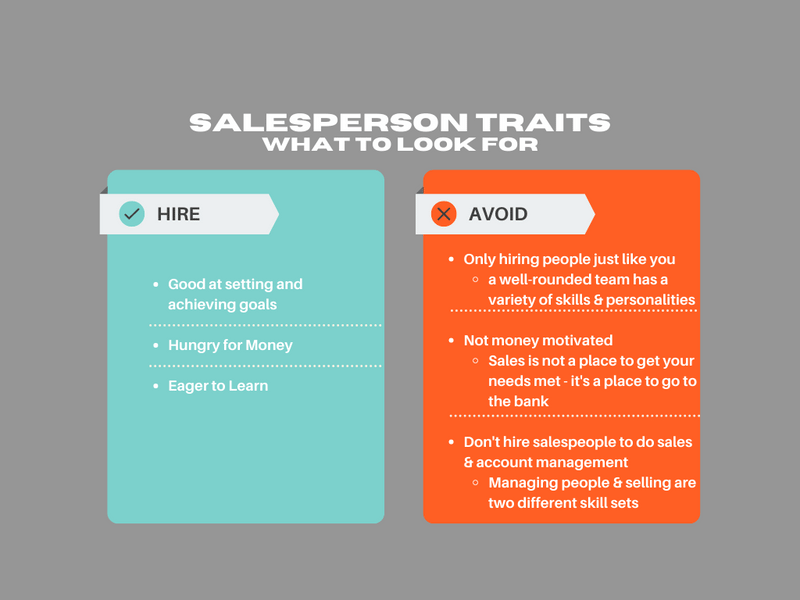
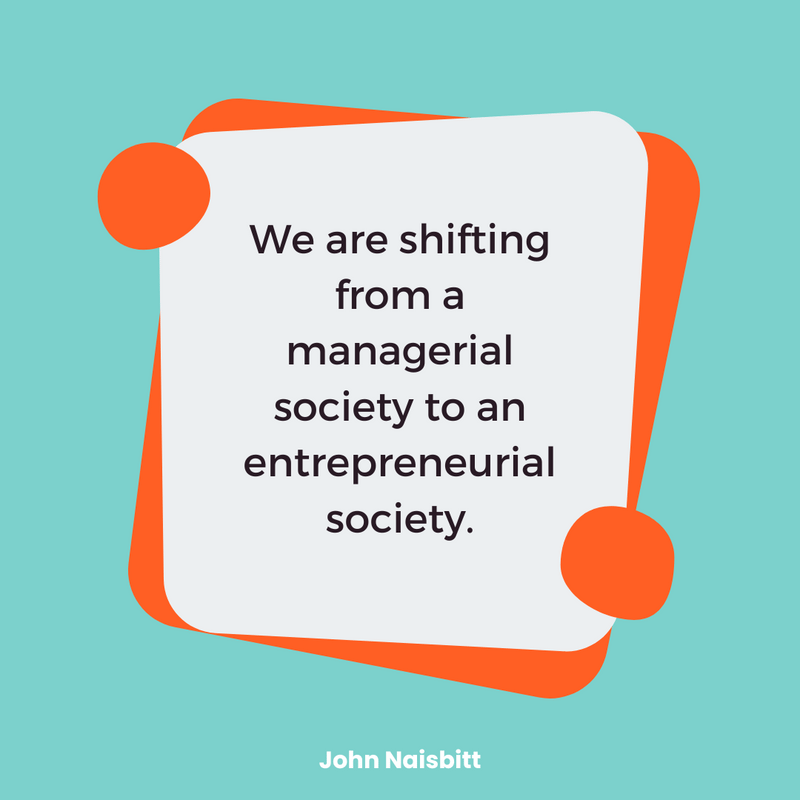 3. Rise of the Soft Skills
3. Rise of the Soft Skills
You’ve undoubtedly heard this before – people do business with people they like. So, this means you might know the qualified plan space inside out and upside down – better than anyone else at the company. But that doesn’t mean your knowledge will translate to sales.
Historically people who focused and excelled in soft skills may have been viewed as weak. This is no longer the case regarding sales; they are more critical now than ever.
According to the Society for Human Resource Management, soft skills are “behaviors, personality traits and work habits, such as collaboration, critical thinking, perseverance, and communication, that help people prosper at work.”
On the other hand, hard skills are part of the skill set required for a job. This includes things like technical skills and job-specific functions that are typically acquired through education and experience. In the past, mastering the hard skills needed for salespeople often ensured you’d hit your sales quota each month. But is it still enough?
Soft skills can be more challenging to teach and more difficult to assess, primarily because they are less tangible. However, if we consider hard skills the foundational bricks of sales, soft skills are the mortar that holds it all together.
Soft skills enable salespeople to move from selling into a space where they can be viewed as a trusted advisor. These skills allow you to be more aware of buyers’ emotions and conscious of what is influencing their buying decisions
Top Soft Skills for Sales
- Communications
- Relationship Building
- Empathy
- Curiosity
- Adaptability & Flexibility
- Humility
How to Develop Soft Skills
- Learn How to Accept & Implement Feedback – not only from people you value but also from people who are very different from you.
- Practice Different Types of Communication – phone, email, video conferences, personal conversations.
- Step Outside of Your Comfort Zone – this is probably the best lesson for growth in any area of your life – work or otherwise!
- Observe Others – determine how you can implement their positive traits in your own, genuine way.
- Work Through Conflict – and learn from it!
Forbes Magazine shared a great article aggregating tips to grow soft skills from a variety of leaders in the field.
Also, the Harvard Business Review’s recent research shows, it’s not just salespeople who need soft skills!
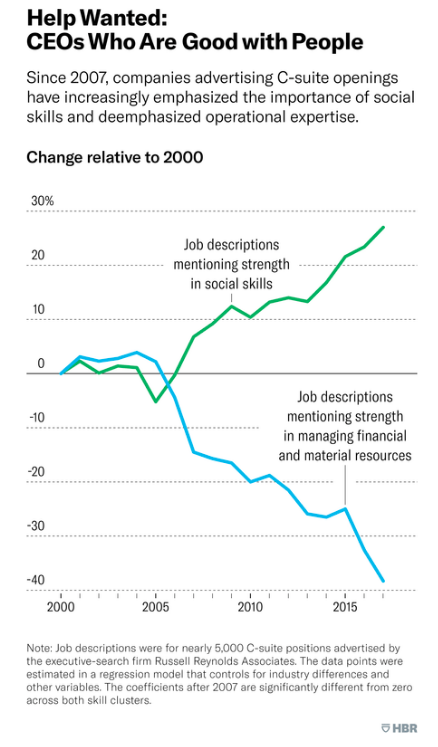
4. The Continuing Rise of Technology
Gartner’s Future of Sales research shows that “by 2025, 80% of B2B sales interactions between suppliers and buyers will occur in digital channels. This is because 33% of all buyers desire a seller-free sales experience – a preference that climbs to 44% for millennials.”
It’s well past time to embrace the digital revolution. The companies that will excel in the coming years will not necessarily be going with the flow, and they will be leading the tide when it comes to adopting digital platforms.
Insider Intelligence predicted some specific banking and financial services digital transformation trends at the onset of 2022; reaching the conclusion: “by and large, it’s going to be critical for banks and FIs to invest heavily in digital transformation, whether that’s by leveraging AI to boost customer personalization, or by joining forces with Big Tech to provide seamless one-stop-shop experiences. Regardless, improving customer acquisition and retention will be key for the banking industry as consumers continue to favor digital interactions.”
While nearly everyone has developed a level of comfort with virtual meetings, that is just the tip of the iceberg when it comes to investing in tech. Tech today has progressed the buyer significantly along their journey, before we ever have a first connection. For those of us who view ourselves as old school, it can be frustrating to embrace change, but it is gratifying in the long run.
Other tech pieces can include:
- Well-organized, informative, SEO-enhanced websites
- Platforms that help to establish trust and make online buying a simple, secure, and integrated process
- Harnessing the power of data and using that to identify prospects
- Smart CRMs that integrate with other technologies (like email delivery services)
Going back to LinkedIn’s State of Sales Report, they included seven trends shaping the future of sales. Three of the seven trends are solidly in the digital realm, and the other four trends certainly have toes dipped into the digital world. The three are:
- Virtual selling is good for sellers and even better for buyers
- Sales technology provides the critical pathway to building trust
- For sales organizations, data is more crucial than ever.
It’s important to note that there will still be clients who eschew digital and actually prefer an in-person meeting or phone call. It helps them to be comfortable with you and to develop a level of trust. And like any trend, the pendulum is prone to swing back – it would not surprise us to see some prospects and clients asking for in-person meetings and phone calls. Sometimes the human connection cannot be beaten.
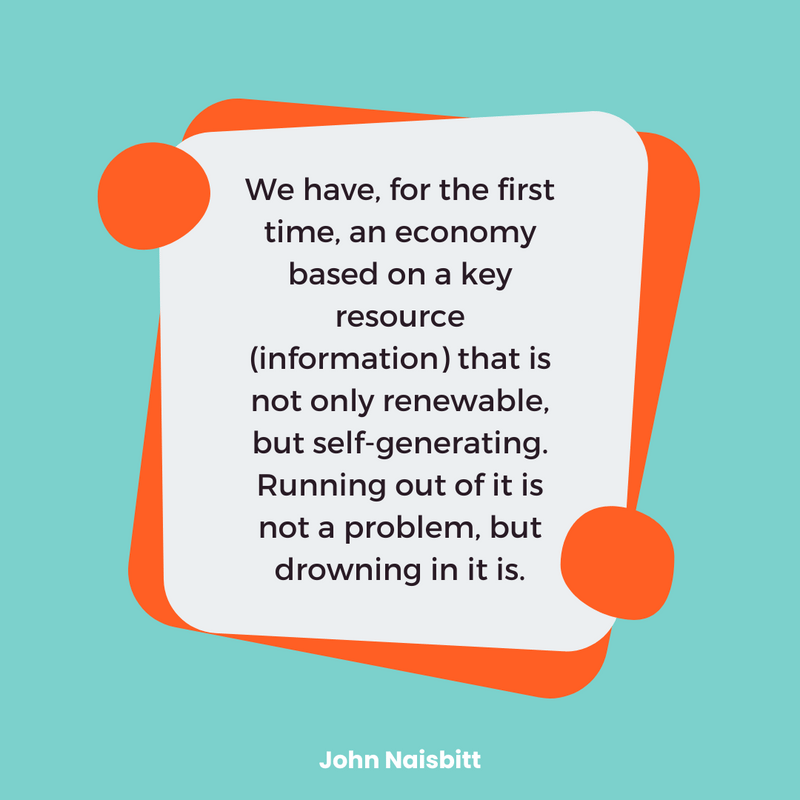 5. The 15-Minute Prospect Call
5. The 15-Minute Prospect Call
How long have we been working on the assumption that a 30-minute or even one-hour first call with a prospect was the only way to go? We think it’s been far TOO MANY YEARS!
Over the last several months, we’ve been testing a 15-minute prospect call and finding it very successful. No one likes to waste time, not your prospects and certainly not yourself. The value of a 15-minute initial call is to gather some preliminary information and to determine if talking further makes sense – for both sides of the conversation.
Adjusting your first meeting conversation is key to making a 15-minute call effective. How you conduct that meeting is everything; this is not just changing the length of the call but changing your approach to the call.
A few important considerations of a 15-minute call:
- This should be a simple, painless call to determine if a further conversation would be valuable
- The point of this call is NOT to make a sale. Think of it more as a pre-qualifying call
- At the end of the call, ask the prospect what they see as the next step (if it went well, the goal is a second, more in-depth conversation). This approach is also an example of utilizing soft skills.
Dan Hudock (our sales guru) and I recently recorded a video that dives deeper into the 15-minute prospect call. We discuss the benefits of 15-minute meetings and then role-play that meeting with various situations, answers, and responses.
Even if you don’t think a 15-minute meeting is right for you, as always, Dan provides some universal sales tips that will benefit everyone. Take a look when you have some time!
Conclusion
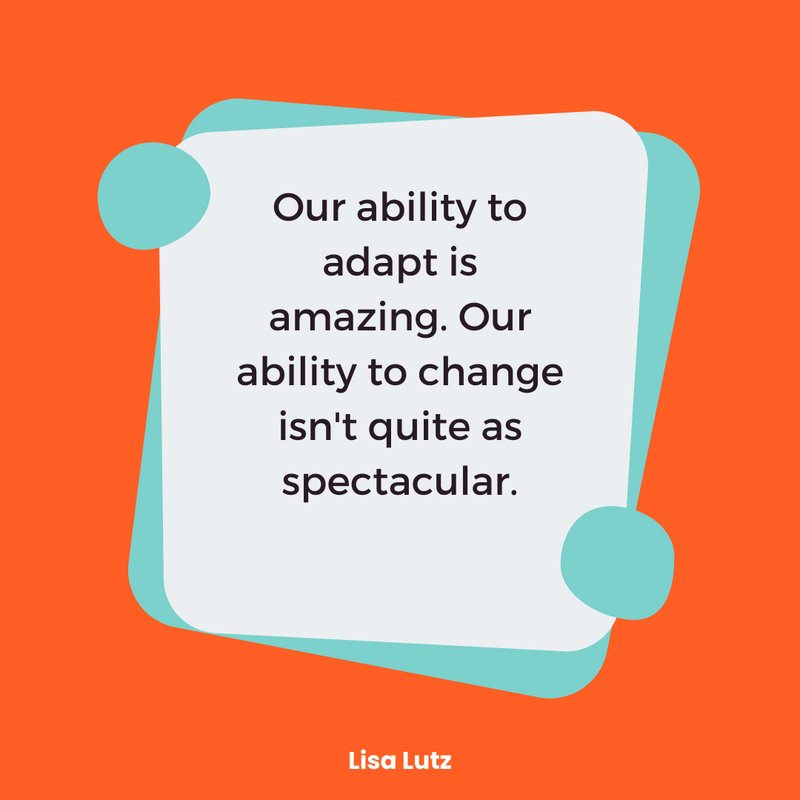
So what is the thread that connects these five trends? Aside from the obvious that adopting them will improve your sales, the most significant thread is that they all require change. And we all know that the concept and idea of change is difficult.
However, the desire to improve, be unique, or innovate is at the heart of things that become trends, and they all require people to embrace change.
Some of the trends we’ve discussed are certainly easier than others to adopt. Some of them may be entirely foreign – if you aren’t used to showing empathy or being flexible, employing soft skills will take some work. If you are used to an hour-long initial meeting where you plan to close the sale at the end, trying a 15-minute call will require a shift in thinking and doing. However, shifting your hiring approach can be much easier to implement.
Let’s be honest; being forward-looking and thinking takes time and a commitment to always be learning and innovating. I’m adamant that I stay on top of technology, and I never want to be in a situation where I rely on my kids to keep me updated. Someone that has always inspired me in his approach to being an early adopter is our CEO, Harvey Pollack. He has never been motivated by having the bright, shiny, expensive thing; instead, he just really enjoys it and finds that it keeps him current and engaged.
Daryl Conner’s book “Managing at The Speed of Change” is a terrific book that describes the mentality of a society always struggling to stay ahead. It’s hard work that we have to commit to. Far too many of us allow change to happen to us rather than embracing the change, or even better, getting ahead of change.
And in the spirit of change, we’ll leave you with one final quote – not from John Naisbitt!
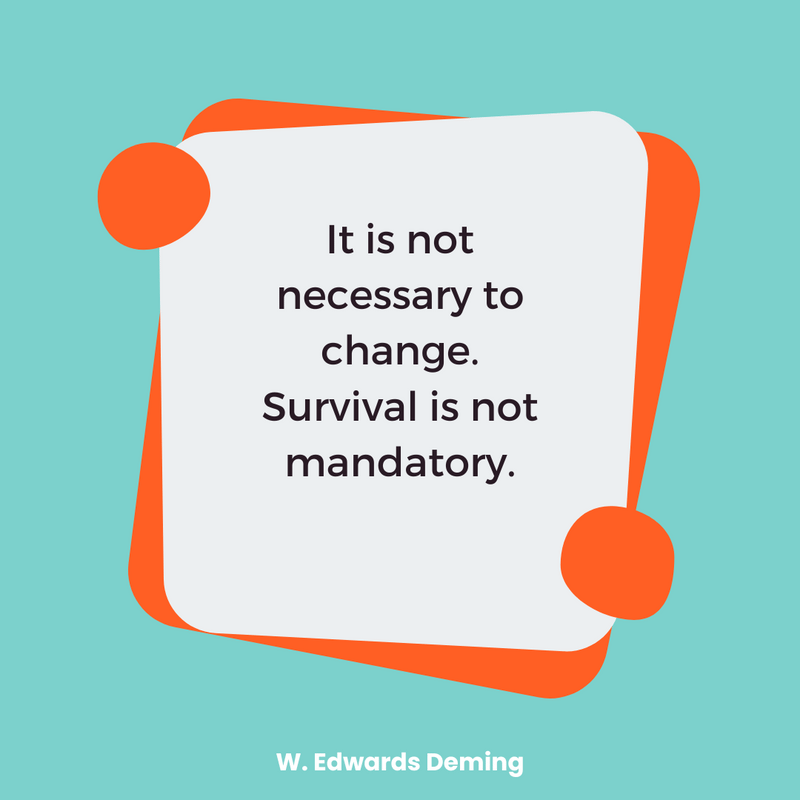
Resources
If you are interested in going deeper into any of these topics, check out some of these resources:
Megatrends 2000
John Naisbitt
Never Split the Difference: Negotiating As If Your Life Depended On It
By Chris Voss & Tahl Raz
Managing at the Speed of Change: How Resilient Managers Succeed and Prosper Where Others Fail
By Daryl R. Conner
Talking to Strangers: What We Should Know About the People We Don’t Know
By Malcolm Gladwell
The Power of Moments: Why Certain Experiences Have Extraordinary Impact
By Dan Heath & Chris Heath
Pitch Anything: An Innovative Method for Presenting, Persuading, and Winning the Deal
By Oren Klaff
